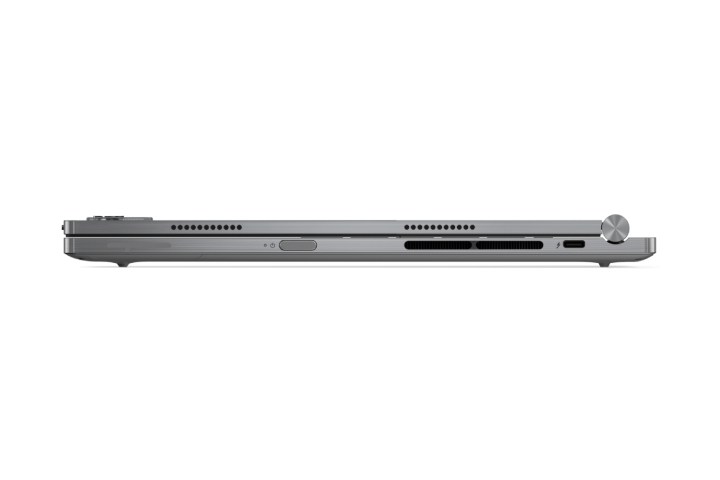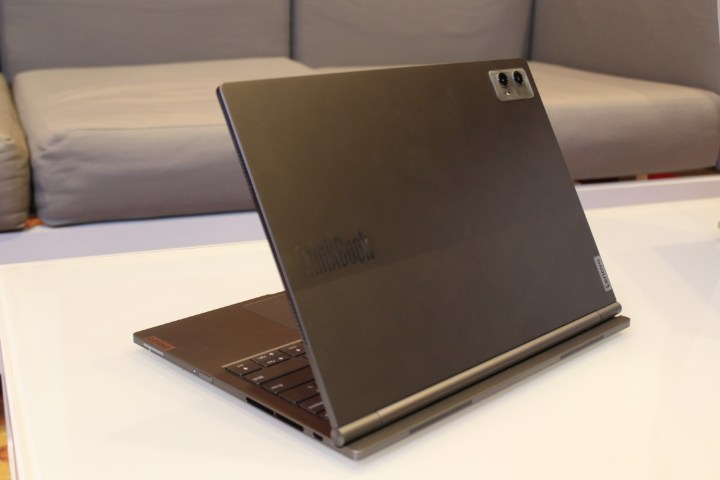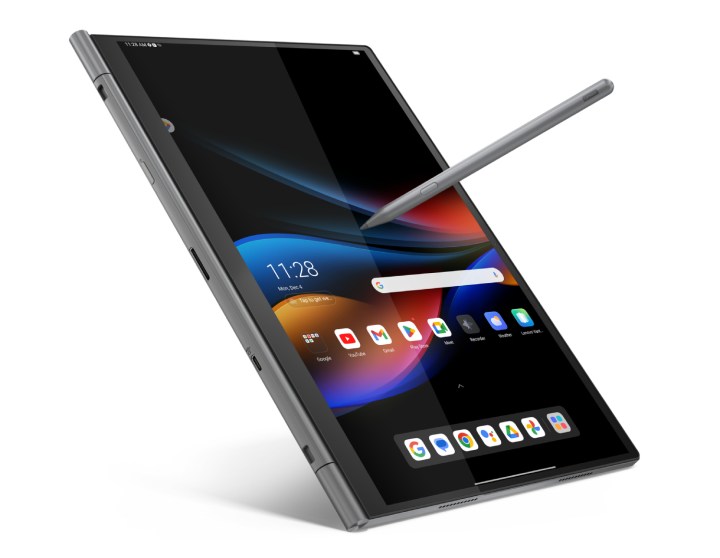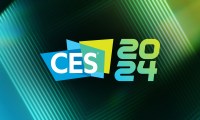
Lenovo has brought a new 2-in-1 device to CES 2024 that solves the biggest problem with the current crop of 2-in-1s out there.
It’s called the ThinkBook Plus Gen 5 Hybrid, and the “hybrid” in the name refers to the fact that this truly is two devices in one. Not a single device with two modes, but two fully functioning computers in a single package — one a Windows 11 laptop and the other an Android tablet. Now there’s something that hasn’t been tried before.
Heck, you can even put both to use at the same time using something called “Hybrid Stream.” Once enabled, you’ll get a picture-in-picture window right on your laptop screen of streamed Android apps, which Lenovo claims is “high quality” and “low latency.” It’s not hard to imagine how immensely convenient this could be, although, at the demo I used, it was extremely slow to respond and laggy.

From the outside, the 14-inch device looks like any other ThinkBook laptop, and in that form, it uses an Intel Core Ultra 7 processor running Windows 11. Lenovo calls this mode the “Hybrid Station,” where it functions more or less like a basic clamshell laptop. It weighs just 2.1 pounds and is only 0.37 inches thick. That makes it an extremely compact device just on its own.
But yank the screen off, and you’ll ignite an entirely different system, run by a Qualcomm Snapdragon 8+ Gen 1 chip and Android 13. It makes for quite a large tablet to hold at 14 inches, 1.7 pounds, and 0.26 inches thick.

Fortunately, you can use the keyboard and touchpad while it’s disconnected as wireless peripherals for the Android tablet too.
The screen looks crisp with its 2.8K resolution and OLED panel, though the refresh rate is locked at 60Hz.
I like the concept of this design because the tablet mode in Windows 11 has always felt half-baked. Despite the small tweaks Microsoft has made to improve its touch functionality, it still feels like something that wasn’t designed to be used without a cursor. It’s what has made Windows tablets as a category completely collapse.

But with a working version of Android — and dedicated hardware to support it — this could be the first 2-in-1 device that doesn’t sacrifice something in either mode.
There appears to be just a single configuration available, which comes with 32GB of memory and 1TB of storage. The tablet itself also has 12GB of memory and 256GB of storage.
The ThinkBook Plus Gen 5 Hybrid will be available at an expected price of $1,999 starting in the second quarter of 2024.
Editors' Recommendations
- Meta Smart Glasses just got the AI upgrade I’ve been waiting for
- This is the best gaming keyboard I’ve ever used — and you’ve never heard of it
- Lenovo partners with iFixit to drastically improve laptop repairability
- The one unbeatable benefit I’ve enjoyed by going all-in on Apple
- This wireless mouse and keyboard are powered by mechanical energy



